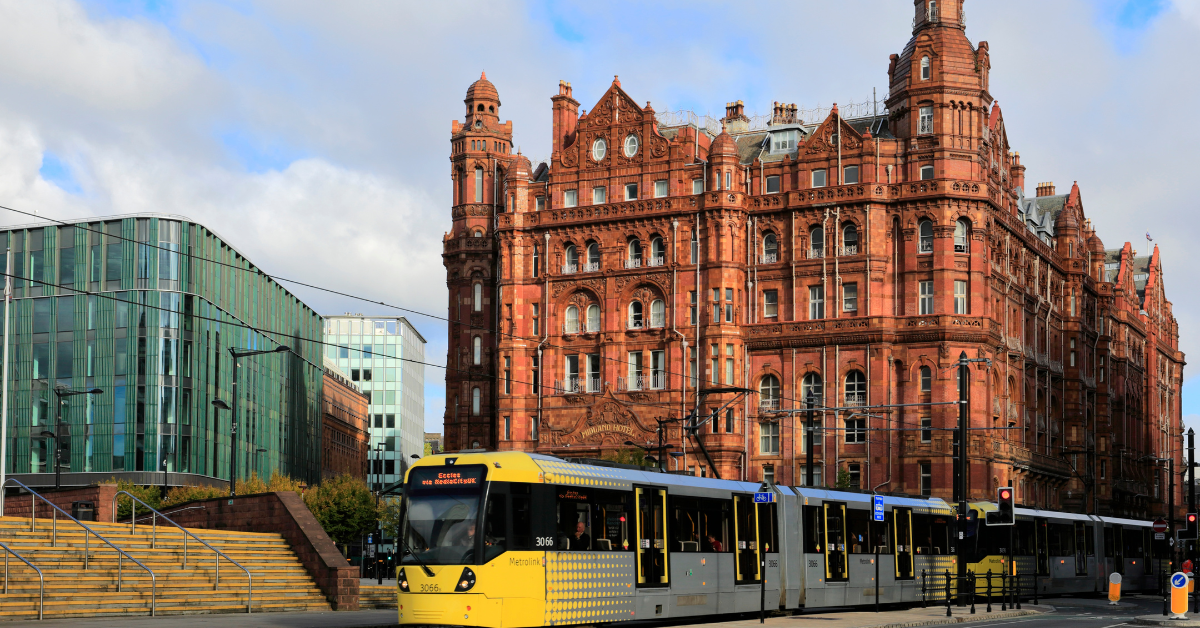Manchester is known as the historic city that led the Industrial Revolution, and today it has transformed into a creative hub where music and sports thrive. In Chinese, the city’s name is written as “曼徹斯特,” a phonetic form that carries profound symbolism. These four characters represent enduring prosperity and a distinctive spirit, reflecting the true essence of Manchester’s evolution.
The Meaning and Origin of the Kanji “曼徹斯特”
The expression “曼徹斯特” is a phonetic transliteration of “Manchester” in Chinese. Each character carries symbolic meaning: “曼” (man) means “to spread” or “to extend,” “徹” (che) means “to penetrate” or “to go through,” “斯” (si) signifies “this,” and “特” (te) means “special” or “unique.” Together, they create a phrase that conveys the image of a strong, distinctive, and enduring city.
| Language | Writing | Description |
|---|---|---|
| Japanese | マンチェスター | Standard katakana spelling |
| Simplified Chinese | 曼彻斯特 | Commonly used in Mainland China |
| Traditional Chinese | 曼徹斯特 | Used in Taiwan and Hong Kong |
| English | Manchester | Original English form |
| Korean | 맨체스터 | Korean Hangul form |
While each language expresses the name differently, they all convey a sense of growth, continuity, and individuality — qualities that mirror the spirit of Manchester itself.
Manchester as the “Cottonopolis” of the Industrial Revolution
During the late 18th and 19th centuries, Manchester became the world’s first industrial city. The textile industry flourished, and innovations such as the steam engine and mechanized spinning transformed the city. This led to its nickname, “Cottonopolis,” symbolizing its dominance in the cotton trade.
| Feature | Description |
|---|---|
| Main Industries | Cotton spinning, steel, and machinery production |
| Infrastructure | Expansion of canals, railways, and ports |
| Social Impact | Growth of the working class and urban population boom |
| Historic Landmarks | Red-brick mills, iron bridges, canal networks |
Many of these historic structures remain today and have been repurposed as cultural facilities. The Science and Industry Museum stands as a symbol of this transformation, displaying steam engines and textile machines that tell the story of human ingenuity during the Industrial Revolution.
How Japanese People Perceive Manchester
To Japanese people, Manchester is not only remembered as an industrial city but also as a hub of music and sports that resonates with cultural energy.
| Field | Impression / Influence |
|---|---|
| Music | Home of global bands like Oasis and The Smiths, who have many fans in Japan. |
| Football | Manchester United and Manchester City serve as symbols of the city’s identity. |
| Education | The University of Manchester attracts many Japanese students and is globally acclaimed in science and economics. |
| Cityscape | A blend of historic architecture and modern redevelopment reflects its evolving identity. |
The popularity of football in Japan, especially through players like Shinji Kagawa at Manchester United, has made the city familiar to Japanese audiences. Manchester is thus seen as a place where history, passion, and creativity coexist.
Manchester as a Leading Sports City
Manchester is one of Europe’s most prominent sports cities. Beyond football, it boasts strong traditions in rugby, cricket, cycling, and athletics. Stadiums like “Old Trafford” and “Etihad Stadium” attract millions of visitors every year.
| Sport | Venue | Feature |
|---|---|---|
| Football | Old Trafford / Etihad Stadium | Home to two of the world’s top clubs |
| Cycling | National Cycling Centre | Base for the UK national team |
| Cricket | Old Trafford Cricket Ground | One of Britain’s oldest cricket venues |
| Rugby / Athletics | City’s multi-sport arenas | Host of numerous international events |
The city also promotes “urban development through sport.” Community sports programs, youth academies, and local events bring people together, enhancing social ties and health awareness. Manchester’s success in hosting international tournaments has earned it recognition as a European capital of sport and community engagement.
From Industry to Creativity: The Rebirth of Manchester
After the decline of heavy industry in the late 20th century, Manchester faced an economic downturn. However, the city launched a remarkable urban regeneration strategy, transforming former factory sites into creative and residential spaces.
| Sector | Policy | Outcome |
|---|---|---|
| Urban Design | Redevelopment of former industrial zones | Fusion of historic and modern cityscapes |
| Arts & Tourism | Music and film festivals, art initiatives | Boost in creative industries and tourism |
| Education & Innovation | University–business partnerships | Growth of start-ups and new industries |
The Northern Quarter district exemplifies this transformation, with old brick warehouses converted into art galleries, cafés, and design studios. Manchester has become a model of creative reuse and cultural sustainability, inspiring urban planners worldwide.
“曼徹斯特” as a Symbol of Cultural Convergence
The kanji “曼徹斯特” is more than just a translation — it is a cultural symbol of Manchester’s enduring spirit. “曼” represents development and continuity, “徹” symbolizes determination and clarity, while “斯” and “特” express individuality and pride. Together, they encapsulate the essence of “a city that evolves across generations.”
Although such phonetic kanji expressions are rare in modern Japanese, similar historical examples include “倫敦” (London), “巴里” (Paris), and “紐育” (New York). Like these, “曼徹斯特” conveys not only pronunciation but also respect for cultural diversity and international exchange.
Conclusion
Manchester has evolved from an industrial powerhouse to a vibrant center of sport, culture, and creativity. The term “曼徹斯特,” though not officially used in Japan, captures the city’s historical depth and innovative spirit in written form.
For Japanese people, Manchester represents a balance between tradition and innovation, a place where industrial heritage meets modern dynamism. Its red-brick factories, music halls, and stadiums stand as symbols of a city that continues to inspire the world through its resilience and creativity.






